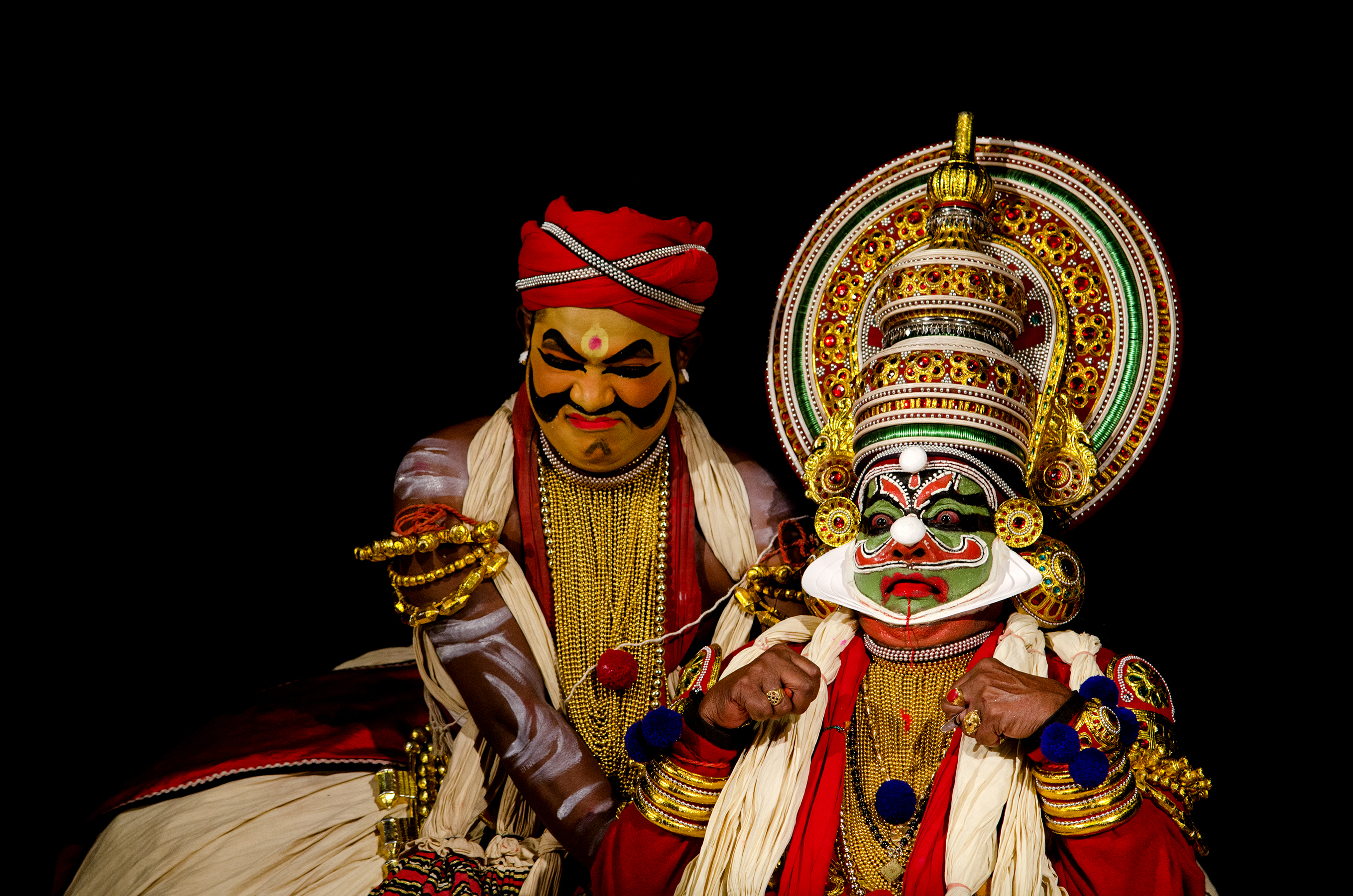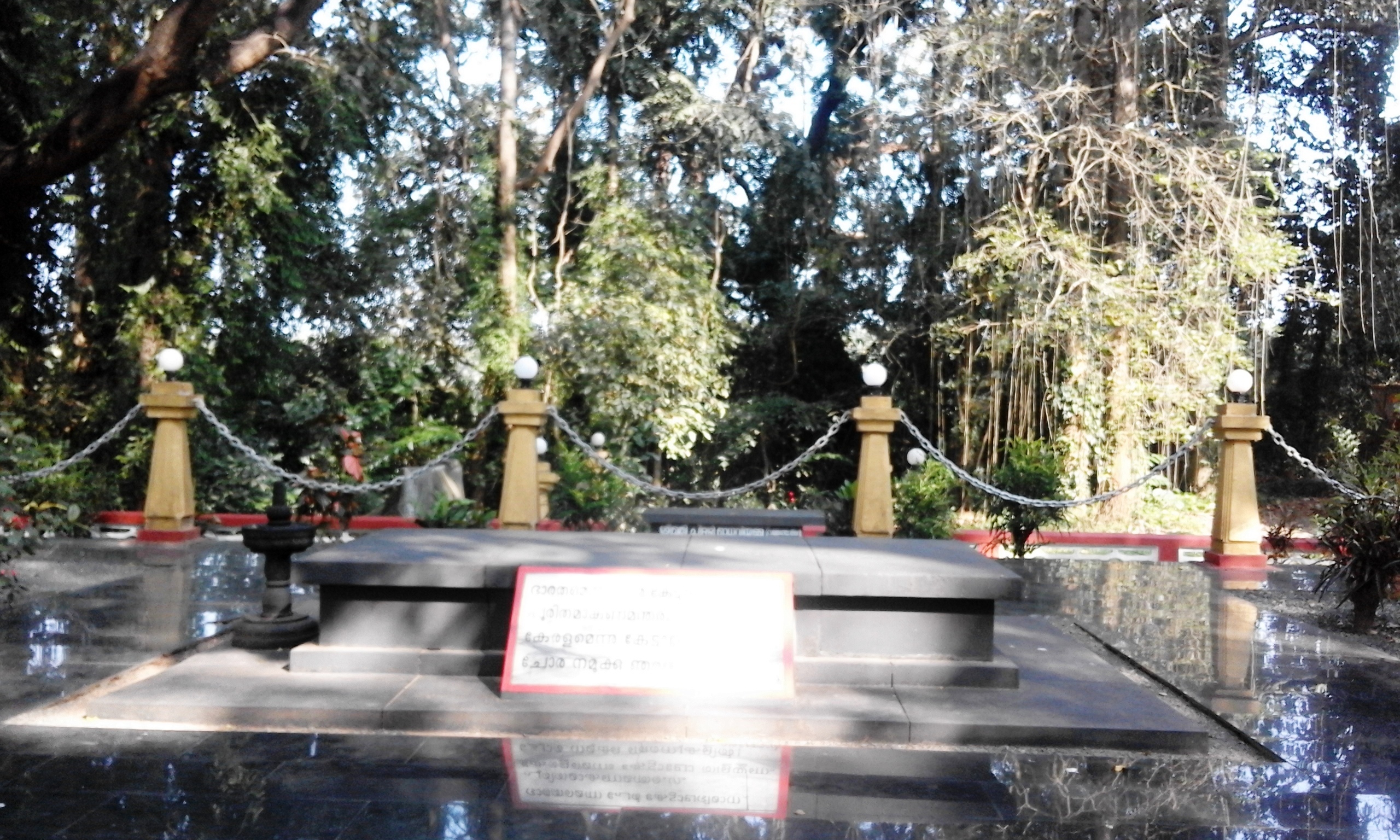|
Kalamandalam Gopi
Vadakke Manalath Govindan Nair popularly known as Kalamandalam Gopi, is an Indian dancer who is an exponent of the classical dance-drama style known as Kathakali. Life Born as Vadakke Manalath Govindan Nair in the Southern Indian village of Kothachira in Kerala, he completed his formal lessons in the dance from the Kerala Kalamandalam in 1957. He began his career on the Kathakali stage in the 1960s and 1970s, but he had been appointed as a teacher at his alma mater, the Kerala Kalamandalam in 1957, by poet laureate Vallathol Narayana Menon, who had founded the school. In 1992, Gopi retired from the post as school Principal and he is the only living performer of the art to have been appointed by Vallathol Narayana Menon himself. He is considered an icon of this dance performance. The Government of India awarded him the civilian honour of Padma Shri in 2009. Dance Gopi is known for the romantic and dramatic portrayal of the virtuous pachcha roles in Kathakali, notable am ... [...More Info...] [...Related Items...] OR: [Wikipedia] [Google] [Baidu] |
Kothachira
Kothachira is a village in central Kerala, southern India. The village is located on the border of Thrissur and Palakkad districts and is also known as Kothara. Transportation Kothachira is connected by road to the nearest towns of Pattambi and Kunnamkulam and has a Chirakkal Vishnu temple, Ayyappan kavu at south Kothachira, Appathuvalappu Devi temple, Vishnu Temple - Aathrasseri, Anthyalan Kavu on Chalissery - Peringode road, Kalari (now only Temple remains). It was the Family Temple of Malayanchath Kalarikkal Tharavadu, recently it is run by a Public Committee. There is Govt.Schools in North and South Kothachira. Kothachira there is a Mana called VENGATTURMANA which belongs to Namboodiri family. Most of the properties was belongs to them and they distributed to the ancestors of families now remains there. They paid Pattom to the land lords (Mana) after each yield for collecting the Pattom there were Kariasthans under them workers to collect it. Most of the time the farmers has ... [...More Info...] [...Related Items...] OR: [Wikipedia] [Google] [Baidu] |
Kerala Kalamandalam
Kerala Kalamandalam, deemed to be University of Art and Culture by the Government of India, is a major center for learning Indian performing arts, especially those that developed in the Southern states of India, with the special emphasis on Kerala. It is situated in the small town of Cheruthuruthy in Thrissur, Thrissur District on the banks of the Bharathapuzha river. History The inception of Kalamandalam gave a second life to three major classical dance performing arts of Kerala as Kathakali, Kudiyattam and Mohiniyattam were, by the turn of the 20th century, facing the threat of extinction under various regulations of the colonial authorities. It was at this juncture, in 1927, that Vallathol Narayana Menon and Mukunda Raja came forward and formed a society called Kerala Kalamandalam. They solicited donations from the public and conducted a lottery in order to raise funds for this society. Kerala Kalamandalam was inaugurated in November 1930 at Kunnamkulam, Kakkad, and was lat ... [...More Info...] [...Related Items...] OR: [Wikipedia] [Google] [Baidu] |
Dancers From Kerala
Dance is a performing art form consisting of sequences of movement, either improvised or purposefully selected. This movement has aesthetic and often symbolic value. Dance can be categorized and described by its choreography, by its repertoire of movements, or by its historical period or place of origin. An important distinction is to be drawn between the contexts of theatrical and participatory dance, although these two categories are not always completely separate; both may have special functions, whether social, ceremonial, competitive, erotic, martial, or sacred/liturgical. Other forms of human movement are sometimes said to have a dance-like quality, including martial arts, gymnastics, cheerleading, figure skating, synchronized swimming, marching bands, and many other forms of athletics. There are many professional athletes like, professional football players and soccer players, who take dance classes to help with their skills. To be more specific professional athl ... [...More Info...] [...Related Items...] OR: [Wikipedia] [Google] [Baidu] |
Making Of A Maestro
{{Short pages monitor ... [...More Info...] [...Related Items...] OR: [Wikipedia] [Google] [Baidu] |
International Film Festival Of India
The International Film Festival of India (IFFI), founded in 1952, is one of the most significant film festivals in Asia. Held annually, currently in the state of Goa, on the western coast of the country, the festival aims at providing a common platform for the cinemas of the world to project the excellence of the film art; contributing to the understanding and appreciation of film cultures of different nations in the context of their social and cultural ethos, and promoting friendship and cooperation among people of the world. The festival is conducted jointly by the National Film Development Corporation of India (under the Ministry of Information and Broadcasting) and the state Government of Goa. Vision ''Ayam nijam paroveti gananā laghuchetasām, Udāracharitānām tu vasudhaiva kutumbakam'' (Extract from the Vedic scripture Maha Upanishad, meaning "This is for me and that is for other – is the thinking of a narrow-minded person. For those who are broad-minded, liberals, ... [...More Info...] [...Related Items...] OR: [Wikipedia] [Google] [Baidu] |
Adoor Gopalakrishnan
Adoor Gopalakrishnan (born 3 July 1941) is an Indian film director, script writer, and producer and is regarded as one of the most notable and renowned filmmakers in India. With the release of his first feature film '' Swayamvaram'' (1972), Gopalakrishnan pioneered the new wave in Malayalam cinema during the 1970s. In a career spanning over five decades, Gopalakrishnan has made only 12 feature films to date. His films are made in the Malayalam language and often depict the society and culture of his native state Kerala. Nearly all of his films premiered at Venice, Cannes and Toronto International Film Festival. Along with Satyajit Ray and Mrinal Sen, Gopalakrishnan is one of the most recognized Indian film directors in world cinema. For his films, Gopalakrishnan has won the National Film Award 16 times, next only to Ray and Sen. He also won the Kerala State Film Awards 17 times. He was awarded the State honours Padma Shri in 1984 and the Padma Vibhushan in 2006. He received ... [...More Info...] [...Related Items...] OR: [Wikipedia] [Google] [Baidu] |
Vanaprastham
''Vanaprastham: The Last Dance'' (french: Vanaprastham: La Dernière Danse) is a 1999 Indo-French psychological drama period film in Malayalam-language that was directed by Shaji N. Karun. It was produced by Pierre Assouline and co-produced by Mohanlal. The screenplay was written by Karun and Raghunath Paleri (who also wrote the dialogues) based on a story by Assouline. It features Mohanlal in the lead role, with Suhasini Maniratnam, Mattannur Sankarankutty Marar, Kalamandalam Gopi, Venmani Haridas, and Kukku Parameshwaram in supporting roles. The film's music was composed by Zakir Hussain. Set in the 1950s in Travancore, the plot follows a lower-caste Kathakali artist Kunjikuttan (Mohanlal). Subhadra (Suhasini), a member of an aristocratic family sees him perform Arjuna. Lost between reality and fiction she falls in love with the character. Their relationship leads to the birth of a child, who is hidden away by Subhadra from Kunjikuttan for almost a lifetime. The film premier ... [...More Info...] [...Related Items...] OR: [Wikipedia] [Google] [Baidu] |
Malayalam
Malayalam (; , ) is a Dravidian language spoken in the Indian state of Kerala and the union territories of Lakshadweep and Puducherry (Mahé district) by the Malayali people. It is one of 22 scheduled languages of India. Malayalam was designated a "Classical Language of India" in 2013. Malayalam has official language status in Kerala, and Puducherry ( Mahé), and is also the primary spoken language of Lakshadweep, and is spoken by 34 million people in India. Malayalam is also spoken by linguistic minorities in the neighbouring states; with significant number of speakers in the Kodagu and Dakshina Kannada districts of Karnataka, and Kanyakumari, district of Tamil Nadu. It is also spoken by the Malayali Diaspora worldwide, especially in the Persian Gulf countries, due to large populations of Malayali expatriates there. There are significant population in each cities in India including Mumbai, Bengaluru, Delhi, Kolkata, Pune etc. The origin of Malayalam remains a matter of ... [...More Info...] [...Related Items...] OR: [Wikipedia] [Google] [Baidu] |
Margi Vijayakumar
Margi Vijayakumar is a Kathakali artist who has specialised in female roles in the classical dance-drama from Kerala, south India. A disciple of the late Padma Shri Kalamandalam Krishnan Nair, he has gained name in his poised handling of Purana characters like Damayanti, Panchali, Mohini and Kunti, mostly opposite star dancer Kalamandalam Gopi. The 1960-born Vijayakumar, a native of Thonnakkal in Thiruvananthapuram Thiruvananthapuram (; ), also known by its former name Trivandrum (), is the capital of the Indian state of Kerala. It is the most populous city in Kerala with a population of 957,730 as of 2011. The encompassing urban agglomeration populati ... district, was initially trained under Thonnakkal Peethambaran, Inchakkattu Ramachandran Pillai, and Mankulam Vishnu Namboodiri. Equally at ease with choreographically dense roles and those that more profile the Kathakali character, many buffs consider Vijayakumar as a legitimate successor to septuagenarian Kottakk ... [...More Info...] [...Related Items...] OR: [Wikipedia] [Google] [Baidu] |
Kottakkal Sivaraman
Kottakkal Sivaraman (1936 – 19 July 2010) was a performing artiste who revolutionised the portrayal of female roles in Kathakali, the classical dance-drama from Kerala in southern India. Career Kathakali, being a largely masculine dance form with an all-male presence (at least till the end of the first half of the 20th century), tended to give female roles a secondary status. This is despite some of its classical stories having dense and slow-paced songs (padams) set for female characters like Lalitha (in Kirmeeravadham, Bakavadham) or Urvashi (in Kalakeyavadham) besides characters like Damayanti ( Nalacharitam) or Mohini (Rugmangadacharitam) or Sairandhri (or Malini in Keechakavadham) which demanded fertile imagination and an insight about their profile for brighter enactment. The 1936-born Sivaraman, a disciple of his uncle-guru Padma Shri Vazhenkada Kunchu Nair at the PSV Natyasangham in Kottakkal in north-central Kerala's Malappuram district, decided to change all this s ... [...More Info...] [...Related Items...] OR: [Wikipedia] [Google] [Baidu] |
Namboodiri
The Nambudiri (), also transliterated as Nampoothiri, Nambūdiri, Namboodiri, Nampoothiri, and Nampūtiri, are a Malayali Brahmin caste, native to what is now the state of Kerala, India, where they constituted part of the traditional feudal elite, owning a large portion of the land in the region of Malabar until the Kerala Land Reforms starting in 1957, and intermarrying with the Nair monarchs and aristocracy through sambandham. They have historically been distinguished by rare practices such as the adherence to Śrauta ritualism, the Pūrva-Mīmāṁsā school of Hindu philosophy, and orthodox tradition, as well as many idiosyncratic customs unique among Brahmins, including primogeniture. Cyriac Pullapilly mentions that the dominating influence of the Nambudiris was to be found in all matters: religion, politics, society, economics and culture of Kerala. History Origin Nambudiri mythology associates their immigration to Kerala from the banks of Narmada, Krishna, Kaveri ... [...More Info...] [...Related Items...] OR: [Wikipedia] [Google] [Baidu] |




.jpg)